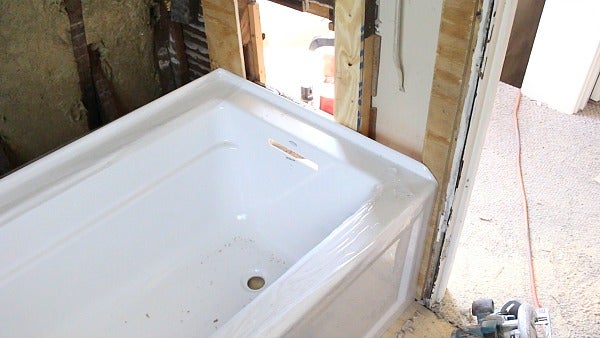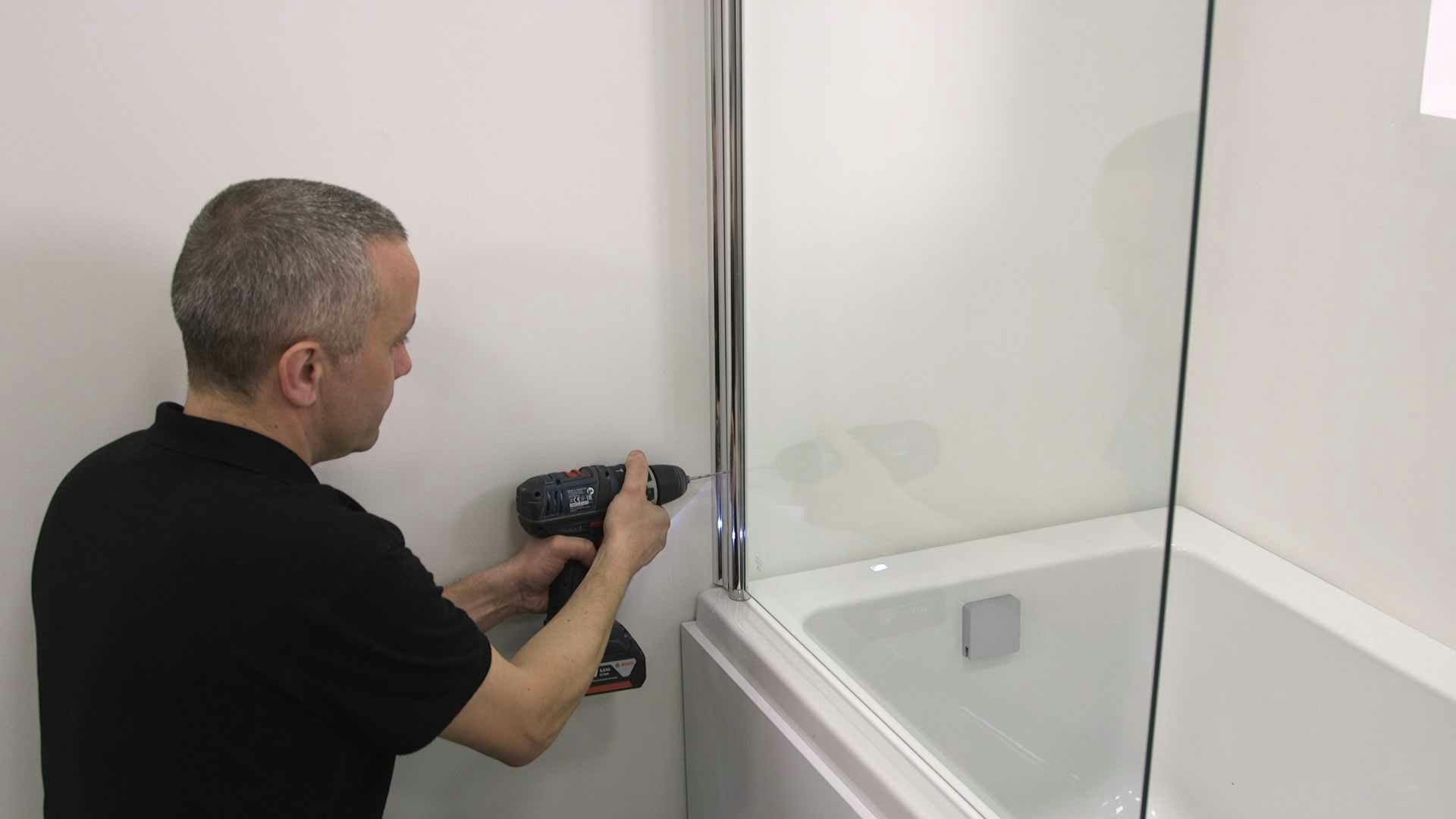Just How To Install A Bath Tub (For Novices).
Just How To Install A Bath Tub (For Novices).
Blog Article
The publisher is making a number of great observations regarding A Step-by-Step Guide to Installing a Bathtub in general in this great article following next.

Setting up a bath tub isn't exactly rocket science, yet it does require strong plumbing, woodworking, and also sometimes, tiling skills. Changing an old bathtub with a new one is additionally a reasonably challenging job. If the old bathtub is readily easily accessible, the job can relocate speedily; if you have to open a wall to eliminate the old bathtub and also place the brand-new bathtub, the task is a lot harder. In either situation, the job is within a house handyman's abilities, although you will certainly need an assistant to vacate the old bathtub and set in the new one. Make certain you have actually qualified yourself for the task as well as fit trying it. Rather than hiring a specialist to take control of a halfway-completed task, it is better to consider utilizing one prior to you start. Possibilities are you might require a specialist plumber to make tube connections.
This short article will assist you set up a brand-new bath tub in your washroom if you have actually currently acquired a brand-new bathtub and also do not require to transform the arrangement of your previous water supply pipelines.
Your tools and also material checklist ought to comprise the following:
Removing Old Touches
If you need to replace old faucets with brand-new ones as a part of your installment, then the first thing you should do is disconnect the water. After doing so, activate the faucets to drain pipes any type of water staying in the system. The process of removing the existing faucets can be rather troublesome due to the restricted access that is usually the instance.
Make use of a container wrench (crowsfoot spanner) or a tap tool to reverse the nut that attaches the supply pipelines to the taps. Have a cloth ready for the continuing to be water that will certainly come from the pipelines. When the supply pipes have been eliminated, use the same device to loosen the nut that holds the taps onto the bath/basin. You will certainly require to stop the solitary faucets from turning throughout this process. Once the faucets have been removed, the holes in the bath/basin will certainly need to be cleansed of any type of old sealing compound.
Before moving on to fit the brand-new faucets, contrast the pipe connections on the old taps to the new faucets. If the old faucets are longer than the new taps, after that a shank adapter is needed for the brand-new taps to fit.
Suitable New Touches
If the tails of the new taps are plastic, after that you will certainly need a plastic connector to stop damages to the thread. One end of the connector fits on the plastic tail of the faucet as well as the other end provides a link to the existent supply pipes.
If you need to fit a monobloc, after that you will certainly require reducing couplers, which attaches the 10mm pipe of the monobloc to the basic 15mm supply pipeline.
Next, position the faucet in the installing opening in the bath/basin making sure that the washers are in area between the faucet as well as the sink. Secure the faucet in place with the manufacturer given backnut. When the faucet is safely in place, the supply pipes can be attached to the tails of the taps. The faucets can either be connected by utilizing corrugated copper piping or with typical tap ports. The former kind ought to be attached to the tap finishes first, tightening just by hand. The supply pipelines can later on be attached to the other end. Tighten up both ends with a spanner after both ends have actually been connected.
Setting up the Bathtub
Utilizing both wooden boards under its feet, position the tub in the needed setting. The wood boards are practical in evenly spreading out the weight of the bath tub over the area of the boards as opposed to focusing all the weight onto 4 small factors.
The following goal is to make certain that the bathtub is leveled all round. This can be attained by checking the level and changing the feet on the bath tub until the spirit level reviews level.
To mount taps, fit the bottom of the outermost flexible faucet connector to the proper supply pipe by making a compression join; after that do the same for the other faucet.
Activate the water supply as well as examine all joints and brand-new pipework for leakages and tighten them if needed. Fill the tub as well as additionally check the overflow electrical outlet as well as the regular outlet for leakages.
Finally, take care of the bathroom paneling as described in the maker's instruction manual. Tiling as well as securing around the bathtub must wait till the bathtub has been made use of at least once as this will certainly settle it right into its last position.
Getting ready for the Installment
First of all, the sustaining structure supplied with the bathroom needs to be fitted (if required) according to the producer's guidelines. Next, fit the taps or mixer to the tub. When suitable the faucet block, it is necessary to make sure that if the tap comes with a plastic washer, it is fitted in between the bathroom and the faucets. On a plastic bath, it is also sensible to fit a sustaining plate under the taps device to stop strain on the bathtub.
Fit the versatile faucet adapters to the bottom of both faucets making use of 2 nuts and also olives (occasionally provided with the bathtub). Fit the plug-hole electrical outlet by smearing mastic filler round the sink outlet hole, and then pass the electrical outlet via the hole in the bathroom. Utilize the nut provided by the maker to fit the plug-hole. Take a look at the plug-hole electrical outlet for an inlet on the side for the overflow pipeline.
Next off, fit completion of the versatile overflow pipe to the overflow outlet. After that, screw the pipeline to the overflow face which need to be fitted inside the bathroom. See to it you make use of every one of the provided washers.
Attach the catch to the bottom of the waste electrical outlet on the bath tub by winding the string of the waste electrical outlet with silicone mastic or PTFE tape, and screw on the trap to the outlet. Connect all-time low of the overflow tube in a comparable manner.The bathroom must currently be ready to be fitted in its final position.
Tiling Around the Bathtub
In the area where the bathroom fulfills the floor tile, it is needed to seal the joins with a silicone rubber caulking. This is essential as the fitting can move enough to fracture an inflexible seal, creating the water to pass through the wall surface between the bath and the tiling, bring about problems with moisture and feasible leaks to the ceiling below.
You can choose from a selection of coloured sealers to assimilate your fixtures and installations. They are marketed in tubes and also cartridges, as well as are capable of sealing gaps approximately a size of 3mm (1/8 inch). If you have a bigger gap to load, you can load it with twists of soaked paper or soft rope. Keep in mind to always load the tub with water before securing, to enable the movement experienced when the bathtub is in use. The sealer can split fairly very early if you do not take into consideration this movement prior to securing.
Alternatively, ceramic coving or quadrant floor tiles can be utilized to edge the bathroom or shower tray. Plastic strips of coving, which are easy to use as well as cut to dimension, are likewise easily readily available on the marketplace. It is advisable to fit the floor tiles utilizing waterproof or water resistant adhesive as well as cement.
Bathtub Installation
How Important Is A Bathtub To Your Home?
High-quality baths, showers, and other bathroom updates are necessary when considering a smart investment in your home. It’s a room that you go to every day and one that is constantly being used by guests.The bathroom is one of the top trafficked rooms in a home and also one of the most valuable in terms of home resale.
Install Piping Before Tub
You will be using your existing drain and waste vent system, but pipes required include the hot and cold water supply lines and a pipe leading to a shower head. A mixing valve and shower head are also needed. Air chambers may be required.
Position the Tub
Lower the tub into place so that the continuous flange fits against the wall studs and rests on 1’x4' or 2’x4' supports. Anchor the tub to the enclosure with nails or screws inserted through the flanges into the studs.
NOTE: Remember, bathtubs and shower stalls may require support framing. A bathtub filled with water is extremely heavy, so check building codes and framing support before installing the tub.
Assemble Drain Connections
Assemble the bathtub drain connections by connecting the tub overflow with the tub drain above the trap, not beyond it. The trap will have a compression fitting that screws over the arm of the overflow assembly.
Place a Pipe For the Shower Head
First, locate a brass female threaded winged fitting and attach it to a framing support via a screw or a nail. Then run a pipe up the wall for the shower head. Sweat or solder the other side of the brass fitting to the top of the pipe.
Attaching Hot and Cold Water Lines
Attach your water lines for both hot and cold by sweating these directly into the hot and cold ports of the mixing valve. The mixing valve will be how water enters the tub’s system, not by the pipes themselves.
Install the Spout
Extend a piece of 1/2 inch pipe, or whichever length is specified in the manufacturer’s instructions, for the tub spout. Sweat on a male threaded fitting at the end of the pipe or use a brass nipple of the proper length and a 1/2 inch cap.
NOTE: At this point you should have your rough-in plumbing work inspected before proceeding further.
Check For Leaks
Restore the water pressure and check the drain connection and the supply pipes for any sign of leaking.
estore the Bathroom Wall
Replace the wall with moisture-resistant drywall as a base for your wall covering. Seal the joints between the wall and your new tub with silicone caulk as protection against water seepage.
https://www.berkeys.com/2016/12/02/bathtub-installation-dallas/

Do you appreciate reading up on Installing A Bathtub? Create a short review further down. We would be delighted to hear your opinion about this blog posting. We are looking forward to see you back again in the near future. Sharing is nice. Helping others is fun. Thank you for your time. Kindly come visit our site back soon.
Visit Our Site Report this page